Posted by Elena del Valle on February 20, 2014

Hercules before Operation Lion Ark – click image to enlarge
Video, photos: Animal Defenders International (ADI)
Animal Defenders International (ADI), a 501(c)(3) nonprofit organization registered in Delaware and California, with offices in Los Angeles, London and Bogota, campaigns on behalf of animals used in entertainment, and other industries. Recently, the organization relocated circus animals, including 29 lions, from circuses in Bolivia after that country’s legislature passed a new law banning animals in traveling circuses, and asked ADI for assistance relocating the lions abroad.
According to ADI, Bolivia’s ban on animals in traveling circuses was the result of the organization’s undercover investigation that exposed behind the scenes cruelty, and its public education campaign. While one circus surrendered the lions voluntarily eight others weren’t ready to comply initially. ADI, with the support of government representatives, pressured the circuses into turning the remaining lions into their custody.
During Operation Lion Ark in 2011, in addition to the lion seizures, the team assisted in moving six monkeys, a coati mundi, a deer and a horse. The native wild animals (monkeys, coati mundi and deer) were returned to protected wild areas.
“What I didn’t realize was that it was going to be an extraordinary story about the human spirit and what the human spirit can do when people come together,” said Jorja Fox, an actress known for her role as Sara Sidle in television show CSI who was an associate producer of Lion Ark and also appears in the film, in a press release.

Hercules after Operation Lion Ark – click image to enlarge
There were about twenty people in the ADI team that saw to the rescue and relocation of the circus animals. They were from Britain, Bolivia, Colombia, Peru and the United States. The organization filmed the activities that took place during the seven month period in which 25 of the 29 lions were seized from the circuses, rehabilitated, flown to their new home in Colorado and released in their new habitat. The result was Lion Ark, a moving film that covers the process from the ADI perspective and features interviews with investigators, campaigners, government officials and members of congress in Bolivia.
The film was separate from the relocation project and took about two and half years to complete. Scroll down to watch short video clip of Lion Ark film.
The relocation of the animals, ground and air transport, crates and the building of the animal enclosures and lion houses at sanctuaries the United States cost over a million dollars. The film budget itself was separately funded, and was about half a million dollars. Bob Barker, a well known celebrity in the United States and an animal rights advocate, funded Operation Lion Ark.
In order to provide the lion prides an experience as close as possible to what they might have had in a natural environment, they were placed in four natural enclosures (among the largest available) occupying 80 acres at The Wild Animal Sanctuary (TWAS) near Denver, Colorado.
“People sometimes ask, why bother about animals when there’s so much human suffering? But it is not a choice of one or the other. When we protect the weakest or the most vulnerable, whether it is animals or people, we all gain. That’s how we shape our world…understanding our connection with other species, and our place on this planet, is the next step in human evolution,” said Jan Creamer, president and founder, Animal Defenders International, in the film.
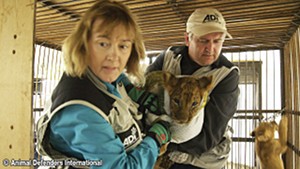
Jan Creamer and Tim Phillips of ADI and a lion cub
Since their relocation, the Lion Ark lions have been living in family prides at the Colorado facility where ADI plans to continue to fund their care for the rest of their lives, according to ADI. The new lion home was outfitted with fencing and basic safety measures as well as enrichment facilities, wooden constructions to climb and play on, hill-like mounds and underground dens, to provide a diverse and exciting space to keep the lions busy and stimulated.
Lion Ark, the film, was nominated for this year’s Image Awards of the National Association for the Advancement of Colored People (NAACP) in the Outstanding International Motion Picture category. The other five nominees in the that category are: War Witch; Call Me Kuchu; La Playa D.C.; and High Tech, Low Life.
Lion Ark Film Festival Selections include: Winner Best Documentary (Jury Award), Sun & Sand Film & Music Festival, Mississippi; Winner Audience Choice Best Documentary, San Diego Film Festival; Audience Choice Award Anchorage International Film Festival; Official Selection Raindance Film Festival, London; Official Selection Mill Valley Film Festival; Official Selection Hawaii International Film Festival; Official Selection Fort Lauderdale International Film Festival; Official Selection Virginia Film Festival; Official Selection Starz Denver Film Festival; Official Selection Irvine International Film Festival; Official Selection Beloit International Film Festival; Official Selection Sedona International Film Festival.
“We are honored to have been nominated for this award. Lion Ark is a film about respect for people and animals so we are really pleased to receive this acknowledgement,” said Tim Phillips, director, Lion Ark, in a press release. “In this film, you see the worst of humanity, but also humanity at its best. It is an empowering film that shows that people can make a difference. Lion Ark shows how animal protection is a vital part of the fabric of social justice, where human society draws a line as to what is, and is not, acceptable.”
The producers of Lion Ark hope to have the movie on general release in 2014. Once Lion Ark is purchased by movie distributors, it should become available at movie theaters, and via TV, DVD and VOD, a representative explained by email. As of November 10, 2013, Lion Ark had appeared in eight major film festivals in United States and United Kingdom.
http://www.ad-international.org/adi_usa/ (required by Animal Defenders International)
Posted by Elena del Valle on November 21, 2013
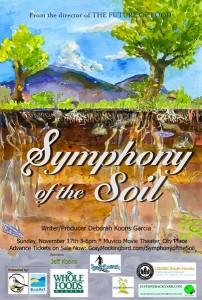
Symphony of the Soil movie poster – click to enlarge
Video, photos: Lily Films
It took filmmaker Deborah Koons Garcia four years and much work to complete Symphony of the Soil, a 104-minute documentary film about the complexity and mystery of soil. Filmed on four continents and featuring the insights of dozens of experts including some of the world’s most esteemed soil scientists, farmers and activists, the insightful film portrays soil as an essential element for our survival. Scroll down to the watch film trailer.
Relying on striking cinematography by John Chater, and Nancy Schiesari in the United Kingdom, combined with art and animation the director illustrates the pivotal role of soil in our world. Experts on screen expound the importance of good soil in solving some of the planet’s most vexing environmental and healthy food supply problems.
The first third of the documentary focuses on soil science. How soil is formed and its life cycle as well as the physical components of soil, the soil orders, the microorganisms that cycle nutrients, soil and plants, and the interrelationship of the many members of the soil community, including humans.
The second third of the film focuses on the relationship between people and soil, especially human’s use of soil for agriculture. The third section explores soil and climate change, water use, health and other topics that support the case for treating soil with care such as the return to small scale organic farming as a viable solution to the problems of resource depletion, climate change and the end of oil; and to the importance of seeds and seed saving in India.

Sekem calendula field
Symphony of the Soil is the second major production of Lily Films. In it the film producers strive to raise consciousness about how people think and treat soil, seeking that they realize that destructive land use practices degrade and poison the soil and that society should take responsibility for protecting and improving soil for the generations to come.
It was filmed on four continents, in six countries, the United States, England, Wales, India, Egypt, and Norway. Some of the locations include, in the United States, Oregon, Washington, California, New York, West Virginia, Kansas, Iowa, Vermont, Hawaii; in the United Kingdom, Devon, Hastings, Bristol, Wales, and Ceredigion; in India, Punjab, Uttarakhand, Rajasthan; in Egypt, Cairo and Aswan; and in Norway, Tromso.
The film was Winner of the Life Sciences Film Festival, Prague 2012, Merit Award for Scientific Information from the Montana CINE International Film Festival, September 2012, and Winner of the 2013 Cinema Verde Film Festival’s Food Award. Koons Garcia received the John de Graaf Environmental Filmmaking Award for her body of films on agriculture, genetically modified food and sustainability at the Wild and Scenic Film Festival, January 2013.
Koons Garcia, a bay area filmmaker, has made fiction, educational and documentary films. For the last ten years, she has focused on films about agriculture, the food system and environmental issues. Lily Films, her film production company based in Mill Valley, California, funded the lion’s share of the production costs for the documentary.
Posted by Elena del Valle on October 18, 2013
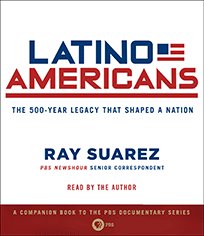
Latino Americans audio book
Photos: HighBridge Audio
In an effort to showcase the role of Hispanics in the history of the United States Ray Suarez, a broadcast journalist, recorded Latino Americans (HighBridge, $34.95) an audio book, as a companion to Latino Americans, a book and documentary television series designed to “chronicle the rich and varied history and experiences of Latinos” by the same name.
The television programs, featuring interviews with several dozen Latinos, aired on public television earlier this year. The unabridged audio recording is based on the book and read by Suarez. The label released it September 2013. It includes nine and a half hours of recording time on eight CDs.
“At the risk of stating the obvious, a television documentary demands to be watched. You must sit in one place and watch as the images accompany the narration. The audio book can, and must, go deeper, as the book does,” said Suarez by email when asked why he opted to record an audiobook and not just the documentary.
“Stories that are briefly shown on the television program are explored in great depth in the audio book, and you can consume the audio book while driving, cooking, or taking your daily walk. The audio book goes where you go, and tells you a story whatever you’re doing. Already with friends and family members I’m reminded of how many people use audio books, and for a wide range of reasons…from helping to break the tedium of a long commute, to getting around the difficulty of reading small type with less acute eyesight, to just wanting company during daily exercise.”

Ray Suarez during the recording of Latino Americans audiobook
In the audio recording, Suarez explores the Latino Americans in early European settlements, Manifest Destiny, Wild West, Cold War, Great Depression, Globalization, Spanish-American War and Civil Rights movement.
Regarding his personal connection with the audiobook Suarez said, “Latino Americans is my third book, but the first of them to become an audiobook. It was an interesting, and sometimes taxing process saying that many words out loud! It made me realize why actors are called upon so often to be the voice of audio books. After all, I had to ‘become’ everyone I quote in my story, men and women, across 500 years of history. A challenge, a joy, and a reminder of why simple sentences work as good storytelling!”
Suarez is a senior correspondent for PBS NewsHour, and host of the public radio show America Abroad. He has also been host of Talk of the Nation on NPR and a correspondent for CNN.
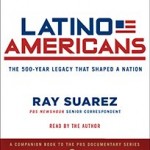
Click to buy audio book Latino Americans
Click to buy DVD Latino Americans
Posted by Elena del Valle on September 23, 2013

Foyle’s War DVD set
Photos: AcornTV, RLJ Entertainment, Inc.
Tired of the same old predictable TV programming? Acorn TV, an RLJ Entertainment, Inc. brand, now offers United States online audiences prime British television through online streaming and on DVD and Blu-ray products. Subscribers to the website pay a fee to watch a rotating selection of programs online at Acorn.tv. The website is compatible with computers, Roku, iPhones, iPads, Apple TV, and Google TV. Offline watching is possible with Acorn’s DVD sets available from retailers, catalog companies, and direct from Acorn.
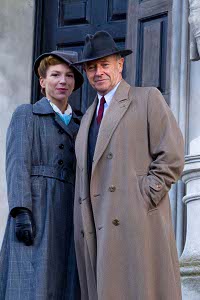
Honeysuckle Weeks and Michael Kitchen from Foyle’s War
This year’s releases include: Jack Irish starring Guy Pearce, BBC’s The Syndicate, The Fall starring Gillian Anderson, North & South starring Patrick Stewart, Falcón starring Marton Csokas, Jack Taylor starring Iain Glen, Miss Fisher’s Murder Mysteries, Doc Martin Special Collection, Helen Mirren’s Prime Suspect and Smiley’s People on Blu-ray. Also on offer Douglas Adams’ Dirk Gently, Tales of the City: 20th Anniversary Edition, and Foyle’s War, George Gently, New Tricks, Murdoch Mysteries, Midsomer Murders and Vera.

Foyle’s War premieres on PBS September 2013
Foyle’s War premieres its new season on Masterpiece Mystery! on PBS on September 15, 22, and 29. Acorn TV will offer each new episode the day after it airs on PBS, as well as all previous episodes. The new episodes will also become available on DVD and, for the first time, Blu-ray from Acorn beginning September 24. The recording will feature the complete United Kingdom broadcast edition. It will also include a recap of the first six sets, four behind-the-scenes featurettes, and introductions by writer and creator Anthony Horowitz. They retail for $49.99. The trailer for the new season is available at youtube.com/AcornMediaUS.
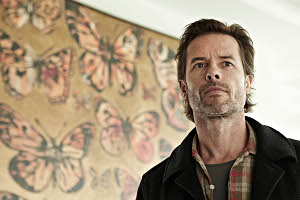
Guy Pearce is Jack Irish, an Australian investigator
Australian accents rule in the Jack Irish series which is based on the brooding antihero of Australian writer Peter Temple’s award-winning novels. Irish, played by Pearce (Iron Man 3, Memento, L.A. Confidential), is reeling in the wake of his wife’s murder. The former lawyer now a part-time private investigator and debt collector stars in two feature-length mysteries. Acorn is due to release the new series on home video October 1, 2013. Until then Acorn TV is the only way for American viewers to see it.
Based in suburban Washington, D.C. and founded by Peter Edwards, Acorn Media Group has grown from a one-man basement documentary production and distribution operation in the mid-1980s into an independent media company operating on three continents. The Acorn Media Group consists of four divisions. With its Acorn label, Acorn Media U.S. distributes British television programming to consumers in North America.
Its Acacia label offers a line of original health and wellness programming. Acorn U.S. also offers documentaries on the Athena label. Acorn Direct is a direct-to-consumer division offering DVDs, digital downloads, and other quality products in North America through its Acorn and Acacia catalogs and e-commerce websites. Acorn Media U.K. and Acorn Media Australia distribute comparable lines of DVD titles to consumers in the U.K., Australia, and New Zealand.

Click to buy Foyle’s War: Set Seven


Jack Irish: Set 1
Posted by Elena del Valle on September 20, 2013
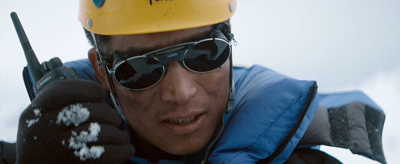
Pemba talks to sherpas on the radio
Photos, video: Robbie Ryan, IFC Films
On August 1, 2008, eleven mountaineers from international expeditions died on K2, said to be the second highest mountain in the world. Three others were seriously injured. It was the worst single accident in the history of K2 mountaineering. Following that day, many wondered why the athletes risked serious injury or death to reach a place inhospitable to humans. Questions about the events and decisions that led to the accident lingered. Unsung heroes were brought to light by some of the survivors.
The Summit, a 99-minute film, rated R and produced in 2012, explores the complex questions that arose that day. It was filmed on location in Ireland, Switzerland, Pakistan, Spain, Serbia, Nepal, Italy, Holland, Norway and Sweden. It features, according to promotional materials and a trailer (no review copy was made available), reenactments based on the testimony of the survivors. It is scheduled to open October 4, 2013 at the Lincoln Plaza, 1886 Broadway, and Sunshine, 143 E Houston Street, in New York City. The following week the film is slated to open at theaters nationwide. Scroll down to watch a film trailer.
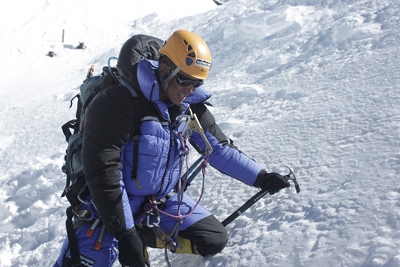
A scene from The Summit
Although the climbing season at K2 usually runs from June to August, in 2008 poor weather made the mountain inaccessible. By the end of July, ten groups of climbers were waiting for an opportunity to scale the summit. Some of the people had waited for almost two months before attempting to reach the top of the mountain. Many lost their lives in the attempt.
The film is Winner of the 2013 Sundance Film Festival Editing Award and 2013 Sundance Film Festival Grand Jury Prize Nominee. It was produced and directed by Nick Ryan, written by Mark Monroe and edited by Ben Stark with the support of investment incentives for the Irish Film Industry from the Government of Ireland.
Posted by Elena del Valle on March 22, 2013
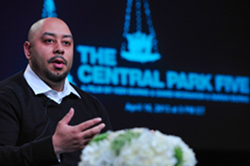
Raymond Santana, one of The Central Park Five
Video and photos: Florentine Films, Rahoul Ghose
In 1989, a white woman was found raped, beaten, nearly naked and near dead in Central Park in New York City. Weeks later five teenage boys who became known as The Central Park Five, Antron McCray, Kevin Richardson, Raymond Santana, Kharey Wise and Yusef Salaam, were arrested for the crime after they confessed following hours alone with police and aggressive interrogation. In 2002, a judge overturned their convictions based on DNA evidence and a confession from an alleged murderer and serial killer. After their exoneration The Central Park men sued the city, the police and the prosecutors. Scroll down to watch a video clip.
The Central Park Five, a 118-minute documentary released November 2012 and scheduled to air on PBS April 16 and become available online April 17, features the story from the perspective of the young men who were teenagers at the time of the crime. In a slow paced, depressing trip back in time featuring interviews with the men, their relatives and a variety of individuals but excluding anyone from the city, the police or prosecutors who declined to appear in the film or present their point of view, the filmmakers take viewers to 1989 New York City. The film will be available in Spanish on the secondary audio channel.
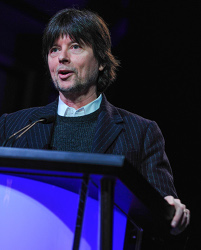
Filmmaker Ken Burns
Others interviewed include New York City Mayors Ed Koch and David Dinkins; Jim Dwyer, Natalie Byfield and LynNell Hancock, journalists; Reverend Calvin Butts; and Craig Steven Wilder, an historian. The film executives and the film were in the news recently after they won a legal victory against New York City representatives who wanted access to film outtakes for use in their defense in the civil suit the young men brought against the city.
The filmmakers were Ken Burns, David McMahon and Sarah Burns. The film was edited by Michael Levine. The cinematography was by Buddy Squires with Anthony Savini with original music by Doug Wamble. Funding for the film was provided by The Atlantic Philanthropies, Corporation for Public Broadcasting, members of The Better Angels Society, including and Bobby and Polly Stein, and PBS.
Posted by Elena del Valle on January 18, 2013

Re-enactment photo: an actress portrays Apolinaria Lorenzana, a young orphan brought into a Spanish settlement in California in 1811*
Photos: Brett Buchanan Photography, 2012
Latin Americans, a three-part, six-hour documentary series said to “chronicle the rich and varied history and experiences of Latinos, who have helped shape the United States over the last 500-plus years,” is expected to air nationally on PBS this fall. Actor Benjamin Bratt will narrate, Joseph Julián González will compose the musical score, and Lila Downs will be the featured artist for the series, performing the closing song. The program features interviews with one hundred Latinos in politics, business and pop culture including Rita Moreno, Dolores Huerta, Linda Chávez, and Gloria Estefan.
Other interview subjects are María Elena Salinas, co-anchor of Noticiero Univision; Juan Gonzalez, author of Harvest of Empire: A History of Latinos in America and co-founder of the Young Lords Organization, a Puerto Rican nationalist movement; Rep. Charles Gonzalez, a retired Texas congressman who from 1999-2012 served in the House of Representatives for the district that his father, Henry B. Gonzalez, represented for nearly four decades; and Herman Badillo, the Bronx politician who, in 1970, became the first Puerto Rican elected to the House of Representatives and ran six times for mayor of New York.
The staff completed the interviews and other shooting and are now finishing post-production, including final editing, narration recording, music scoring, audio mixing, color correction and packaging. Between pre-production, production and post-production, the entire series will take 18 months to complete. A spokesperson indicated via email, “… we expect to have our finished series in March 2013, ahead of the Fall 2013 broadcast premiere.”
The six segments of the series are in chronological order: Strangers in Their Own Land, from 1500-1880; The Pull and the Push, between 1880 and the 1940s; War and Peace, from the World War II years; The New Latinos, from the post-World War II years into the early 1960s; Pride and Prejudice; and Peril and Promise, over the past 30 years.
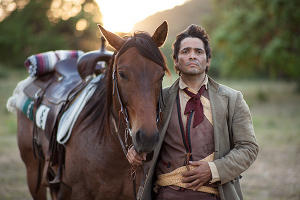
Re-enactment photo: An actor portrays Juan Seguín, a political and military figure of the Texas Revolution and Republic of Texas.**
More than two dozen people worked on the series, a production team for each of the six hours, who shot in various places around the country; a production team with Bosch and Company, Inc. in Boston; and the team at WETA Washington, D.C. There are re-enactments in the two first hours of the series, depicting scenes with historical characters such as Apolinaria Lorenzana and Juan Seguín, figures from the 19th Century.
The scenes for Lorenzana, a young orphan who Spanish representatives brought into the Spanish settlement in California in 1811, were shot on-location at Mission San Francisco de la Espada (Espada Mission) in San Antonio, Texas. The scenes for Seguín, a political and military figure of the Texas Revolution and Republic of Texas, were shot on-location at Northrup Pipe Creek Ranch in Lakehills, Texas. Other historic characters brought to life through dramatic re-enactments include Mariano Guadalupe Vallejo, a Californian military commander, politician, and rancher; and Juan Salvador Villasenor, whose family fled the Mexican Revolution. The production team shot new footage for the final sixth hour of the series, of modern stories.
Funding for the program was provided by Corporation for Public Broadcasting (CPB), Public Broadcasting Service (PBS), Ford Foundation, National Endowment for the Humanities, The Rockefeller Foundation, The Arthur Vining Davis Foundations, Latino Public Broadcasting (LPB) and The Summerlee Foundation. The series is a production of WETA Washington, DC; Bosch and Co., Inc.; and Latino Public Broadcasting (LPB). The executive producers are Jeff Bieber and Dalton Delan for WETA, and Sandie Viquez Pedlow for LPB. Adriana Bosch, a Cuban-born filmmaker whose previous PBS projects include Latin Music U.S.A. and documentaries on Presidents Dwight Eisenhower, Jimmy Carter, Ronald Reagan and Fidel Castro, is the series producer.
Plans are for the series to be accompanied by a bilingual public education campaign, a bilingual website with user-generated digital content, social media platforms and the development of a school-based curriculum. A companion book by Ray Suarez, senior correspondent, PBS Newshour, will be published by Celebra, and is expected to be released in conjunction with the broadcast premiere.
*Shot on-location for Latino Americans at Mission San Francisco de la Espada (Espada Mission) in San Antonio, Texas. **Shot on-location for Latino Americans at Northrup Pipe Creek Ranch in Lakehills, Texas.
Posted by Elena del Valle on September 27, 2012
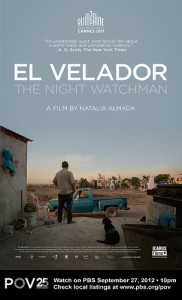
El Velador film poster – click to enlarge
Video, photos: El Velador (The Night Watchman)
Mexico’s drug war is said to have resulted in 50,000 violent deaths from the last few years to date. One place where the dead are remembered is in a cemetery in Culiacan, Mexico where many of the country’s drug lords are said to be buried. El Velador (The Night Watchman), a 72-minute 2011 documentary about a slice of everyday life with the night watchman who looks after the cemetery and its elaborate mausoleums, is airing in the United States on PBS and as part of a national museum tour including Wexner Center for the Arts, Columbus, Ohio; Walker Art Center, Minneapolis; Nelson-Atkins Museum of Art, Kansas City; and Yerba Buena Center, San Francisco. Scroll down to watch a video clip of the documentary.
“Drugs are trafficked and consumed around the world and yet Mexico is the battlefield of the war on drugs. I hope El Velador is a film that will touch audiences and help us understand what it means to live in a situation of violence and what socio-economic conditions lead to violence,” said Natalia Almada, director of the film, by email in response to a question about why she filmed the documentary and how she believes it is relevant to United States audiences today.
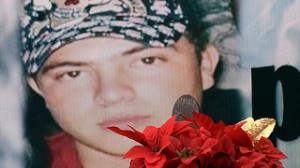
A scene from El Velador
El Velador will stream on the POV website, www.pbs.org.pov/, from September 28 to December 20, 2012. Details about the museum tour can be found at http://www.icarusfilms.com/playdates.html#vela and information about the film DVD is listed at http://www.icarusfilms.com/new2011/vela.html
The film begins inside the watchman’s truck with a view of the cemetery through a dirty and fogged up windshield reminiscent perhaps of the public’s view of the war itself. With an introspective slow tone the film is notably dark during the evening scenes, featuring background television and radio news and little Spanish language dialogue with English language subtitles. The modest, poor looking construction workers with torn shoes present a contrast to the expensive structures they build for the newly departed. Also notable are the luxury cars and the large colorful banners each with a photo and years of birth and death commemorating of the deceased.
“When I first went to film at the cemetery where the film takes place in July 2009, there were four new mausoleums under construction and a tractor was digging up the dirt for a new hole to bury another 300 bodies,” said Almada in a press release. “The ‘progress’ of the cemetery mirrored the violence that was spiraling out of control.”

Natalia Almada, director, El Velador
“In making El Velador, I hoped to gain entry to that world of violence. To experience what it means to live in that context, to work, to mourn, to sweat, to sleep there. I wanted to pause, and I wanted others to pause and be suspended in that place and moment where violence has just occurred and where violence is imminent. By restricting myself to one small corner of the cemetery, I came to realize that it is only by paying attention to the details that we can begin to fathom the complexity of violence,” said Almada in her filmmaker statement (she referred queries to the POV and film websites).
The film, co-produced by POV (Point of View) American Documentary Inc. and Natalia Almada (Al Otro Lado, 2006; El General, 2010), had a $300,000 budget. Almada, an award-winning director originally from the state of Sinaloa in northern Mexico, was also producer, director of photography and editor of the documentary. She received the 2009 Sundance Documentary Directing Award for her film about her great-grandfather, Mexican president Plutarco Elías Calles.
POV (Point of View) is one of television’s longest-running showcase for independent non-fiction films on PBS. Since 1988, POV has presented 300 films to public television audiences across the country.
Posted by Elena del Valle on September 26, 2012
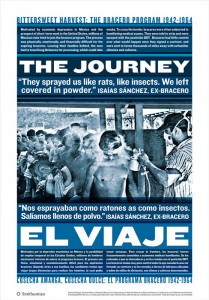
Smithsonian Bracero Exhibit poster – click to enlarge
Photos: Leonard Nadel, Bracero photo courtesy Smithsonian National Museum of American History
Many people are aware that there were labor shortages in the United States during World War II, what they may not know is that to overcome the situation the government initiated a series of agreements with Mexico to recruit guest workers for American farms and railroads. The Emergency Farm Labor Program, more familiarly known as the Bracero Program, brought as many as 2 million Mexicans to the United States for this purpose.
While the work was often grueling, the program offered participants economic opportunity, and the contributions made by these laborers have had significant impact on the political, economic and social climate of both countries, according to the Smithsonian Institution Traveling Exhibition Service (SITES).
This fall the Smithsonian Institution Traveling Exhibition Service is featuring an exhibit about this little-known chapter in American history as its fall 2012 free resource for schools, migrant education centers, museums and libraries. Titled “Bittersweet Harvest: The Bracero Program, 1942-1964,” the exhibit, based on the traveling exhibition by the same name with images and interviews by documentary photographer Leonard Nadel, includes a set of six bilingual posters made this year based on the materials from the exhibition.
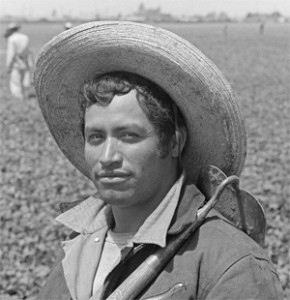
Bracero in the field, 1956
The exhibit was organized by the National Museum of American history in partnership with the SITES, and received federal support from the Latino Initiatives Pool, administered by the Smithsonian Latino Center. The collection will be on display in several states through 2014. Two copies of the same exhibition have visited 10 cities nationally. A list of cities and dates may be found at sites.si.edu/bracero/
“We partnered with University of Texas, El Paso and Brown University and other regional universities to invite former braceros and family to participate,” Steve Velasquez, curator, original Bracero exhibition, explained by email when asked about the selection criteria for the exhibit. “We recorded over 700 interviews. We used the Nadel images as a guide touching on the themes of why they created the program and why they journeyed, what kinds of work did they do, what was the experience like, and what was the legacy of the program in the US. We reviewed close to 200 interviews to use in the exhibit. The poster set is drawn from Bittersweet Harvest exhibit.”
In response to the question about the people and organizations responsible for selection of the project, he said: “We held an advisory meeting in 2005 with other experts in Mexican American history, bracero history, public history, agriculture/labor history, and Latino history. Our partners contributed resources to the collecting of the materials. George Mason University helped create the website braceroarchive.org. At the Smithsonian Institution the curators and educators were Peter Liebhold, Steve Velasquez, Magdalena Mieri, and Bonnie Campbell Lillienfeld. Kristine Navarro and staff from UTEP Matt Garcia from Brown Univ., Sharon Leon from GMU. As well as a host of other institution that provided space to do collecting.”
Little information remains of the program participants today, he explained: “We have no record of how many remain in the US today. The contracts indicate that they needed to return to Mexico at the end of the contract or after 18 months. From our research we know some were sponsored to get work permits and citizenship by growers or married Americans. Some returned later in life. Some went back to Mexico never to return. Some skipped out on the contracts. Many men held multiple contracts.”
The organizers have not decided what will happen to the exhibition when the tour ends. The National Museum of American History collects, preserves and displays American heritage in the areas of social, political, cultural, scientific and military history. The Smithsonian Latino Center is dedicated to ensuring that Latino contributions to arts, sciences and the humanities are highlighted, understood and advanced through the development and support of public programs, scholarly research, museum collections and educational opportunities at the Smithsonian Institution and its affiliated organizations across the United States.
Posted by Elena del Valle on July 27, 2012

Sam, Elida and Dulce Mejia-Perez outside of Quetzaltenango, Guatemala
Videlo, photos: POV, Theo Rigby, Katina Papson
In 2010, with a $10,000 budget and support from his graduate program, filmmaker Theo Rigby, with the help of three assistants, showcased the case of a family of five divided by the parents deportation from the United States many years after they entered the country illegally. Sin País (Without Country in Spanish), a 19-minute documentary style short film, follows the Mejia Family through the deportation process of the parents who leave the country with Dulce, their young daughter, while their two teenage children remained in the United States. Scroll down to watch a video clip in Spanish with English subtitles.
The film, a Student Academy Award winner, features tearful scenes in the family’s home in the United States, rural takes with the parents and their youngest child on their return to Guatemala, interviews with the two teenagers, and a Christmas visit from the teenage daughter from the United States to Guatemala; the teenage boy could not travel because his immigration status was uncertain.

Filmmaker Theo Rigby
“I made Sin País to show some of the nuances and complexities of deportations, and to address how mixed-status families often grow deep roots in the U.S. over many years,” said Rigby. “The film shows how deportations have vast ripple effects that often effect many U.S. Citizens, and as ICE deported a record number of people in 2011 (400,000), the story of Sin País resonates very deeply on myriad social and political levels today.”
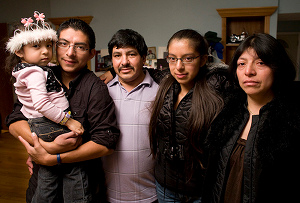
The Mejia-Perez family in California on the night of the deportation of Sam and Elida
The film was selected by Point of View (POV), a long running showcase that features the work of some of today’s independent documentary filmmakers, and will air on on television nationwide in POV Short Cuts Thursday, August 9, 2012 at 10 p.m. on PBS. The one-hour program, part of the 25 anniversary season of POV, will also include The Barber of Birmingham: Foot Soldier of the Civil Rights Movement and three new animated shorts: Eyes on the Stars, Facundo the Great and A Family Man.
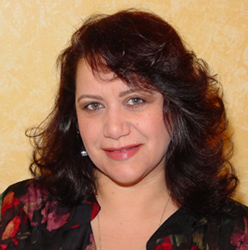
Cynthia Lopez, co-executive producer, POV
“About 1,200 documentaries are submitted a year and we select anywhere between 12-18 premieres. In terms of shorts, about 100 shorts are submitted to POV per season and we select approximately 6-8 per year. Highly competitive,” said Cynthia Lopez, co-executive producer at POV by email when asked about the selection process.
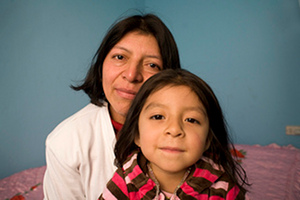
Elida and Dulce Mejia-Perez
Rigby’s work has focused on topics ranging from the war in Iraq to the justice system. For the past six years he has been making films about immigration issues in the United States. POV has brought 325 acclaimed documentaries to millions of viewers nationwide. POV Short Cuts will stream on the POV website from August 10 to September 9, 2012.







































